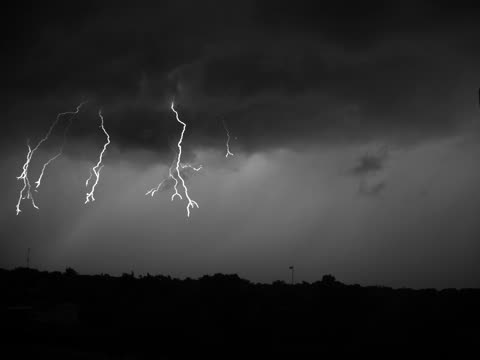Lightning captured at 7000 fps
 Environment Lightning captured at 7,000 fps Scott Collie May 24, 2016 Researchers at the Florida Institute of Technology have snapped stunning images of lightning at 7,000 frames per second while testing a new high-speed camera. The camera will be used to gain a better understanding of jets, gigantic jets and starters projecting upwards from thunderstorms in the upper atmosphere. It was train..>> view original
Environment Lightning captured at 7,000 fps Scott Collie May 24, 2016 Researchers at the Florida Institute of Technology have snapped stunning images of lightning at 7,000 frames per second while testing a new high-speed camera. The camera will be used to gain a better understanding of jets, gigantic jets and starters projecting upwards from thunderstorms in the upper atmosphere. It was train..>> view original$1M to help councils manage problem flying fox colonies
THE NSW Government has pledged $1 million for councils to manage problem flying fox colonies across the state. THE NSW Government has pledged $1 million for councils to manage problem flying fox colonies across the state.A grants package of up to $1 million in total will be available to councils for preparing camp management plans, implementing camp management plans and emergency actions for camps where there are significant community impacts.The grant allocation process will be a..>> view originalDamselfish in a degraded habitat in the northern part of the Great Barrier Reef. Photo: Supplied
Damselfish in a degraded habitat in the northern part of the Great Barrier Reef. Photo: Supplied "If we carry on as we are with poor water quality, we are stuffed with a capital S."The state's chief scientist did not mince words when handing down a taskforce report on how best the government should spend its $90 million Great Barrier Reef protection fund, highlighting two "pollution hot spots", incentives for farmers and a co-ordinated approach from the state..>> view originalHuge solar storms may be key to life on Earth
The latest results from NASA’s Kepler satellite may have finally solved the mystery of how the conditions for life were created on our younger Earth - and surprisingly it seems titanic eruptions from the Sun were the cause. Far from damaging us, solar storms may have warmed the young Earth enough to house life as well as provided the chemical building blocks to create it. VIDEO A faint young Sun and how violent storms may have actually helped us, as explained by NASA Goddard Known as the faint ..>> view originalA rallying call for microbiome science national data management in US
No-Show Pacific Ocean Humpbacks Stump Scientists
Each fall, Pacific Ocean humpback whales migrate from their summer feeding grounds near Alaska and Russia to the warm waters further south. In these places, the whales spend their winters finding mates, breeding, and giving birth to and rearing calves conceived the previous winter. Or, they normally do. This past winter, the whales, by and large, failed to show up. Whale researchers from around the Pacific are reporting that far fewer whales showed up in their usual wintering grounds than normal..>> view originalLabor's Mark Butler: Turnbull government's direct action could morph into ETS
Opposition Leader Bill Shorten with Canberra MP Gai Brodtmann at a solar farm near Canberra. Andrew Meares Labor's environment spokesman Mark Butler says the Turnbull government's direct action policy could be converted to an emissions trading system but the government lacks the will and its policy settings will do nothing to limit greenhouse gas emissions. "You could reconfigure it to be a baseline and credit emissions trading system (but) eq..>> view originalScientists discover “new” craters on the Moon
10 Albedo map credit: NASA GSFC/SwRITopographic map credit: NASA GSFC/ASU JmoonUnderstanding the Moon’s recent geological history is important and could put the entire solar system into perspective.“These ‘young’ impact craters are a really exciting discovery,” said SwRI Senior Research Scientist Dr. Kathleen Mandt, who outlined the findings in a paper published by the journal Icarus. “Finding geologically young craters and honing in on their age helps us understand the collision history in the ..>> view original
| Canberra city Supabarn to reopen as Coles on June 8 . | Drone captures shark feeding frenzy . |
| Telstra hit with another outage . | New Zealand Warriors vs Canberra Raiders: NRL live scores, blog . |
No comments:
Post a Comment